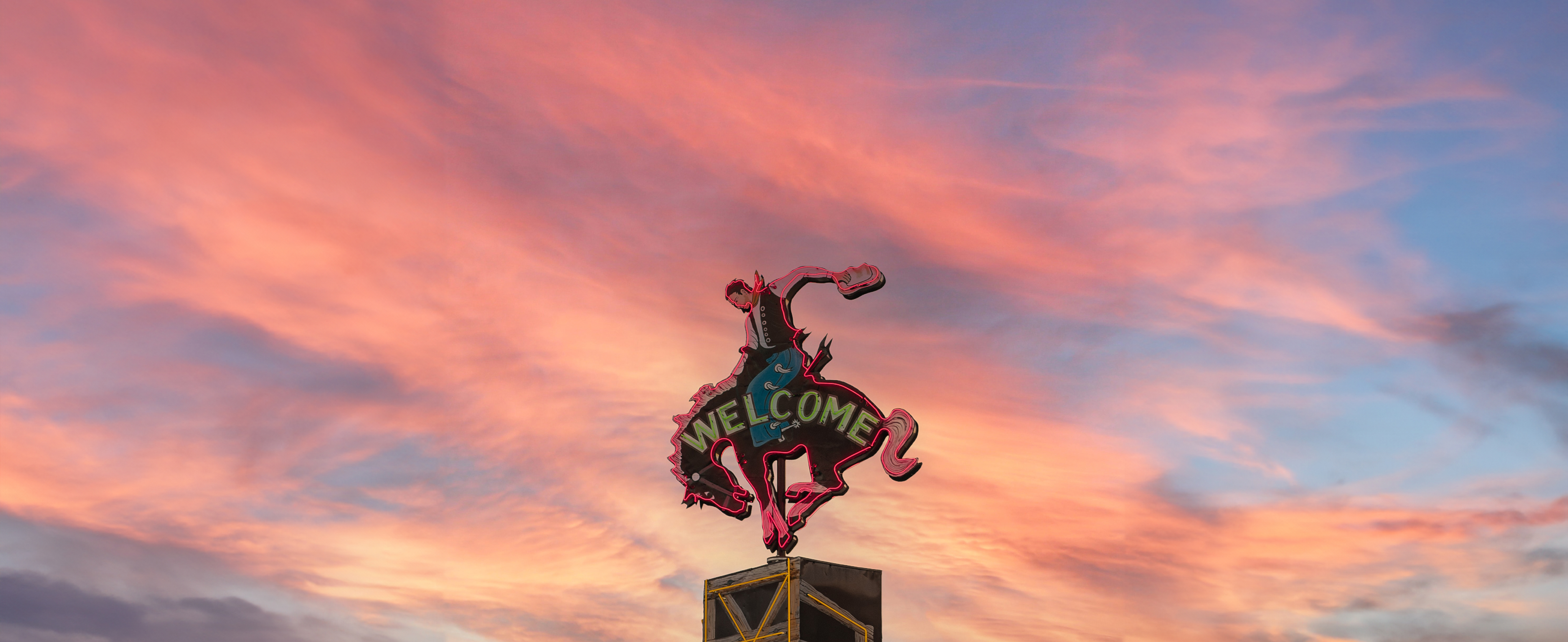Confronting the Legendary Great Plains
April 2-3, 2024 | Lincoln, Neb.
From tall tales, legends, and lore to the true history and current issues of the region, the 49th annual Great Plains conference examines the storylines of the Great Plains. Stories matter, and the stories told about the region in its past and present continue to impact and shape it today and into the future. How are the Plains and the people who live here portrayed, characterized, and commemorated? Who is included in these stories and who is left out? How do we challenge the myths of pioneers, cowboys, and Indigenous peoples of the Plains? What are the forgotten and hidden stories of the plants, animals, and landscapes of our region? Who is included in our monuments? This conference will explore and confront these questions and more through the lenses of history, education, media (including film, tv, literature, comics), landscapes, museums, art, and historic memorials.
Supported by the Mellon Foundation, UNL's Willa Cather Archive, the College of Architecture, and UNL Libraries.
Keynote speakers
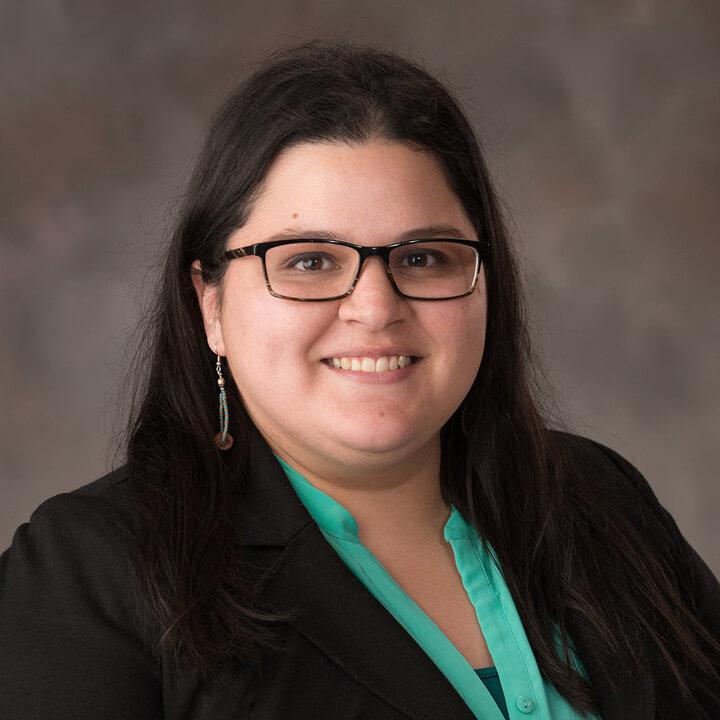
Margaret Huettl (Anishinaabe)
Here Lies the Pioneer: (Re)Covering the Oregon Trail
Like the rest of her generation, Margaret Huettl grew up playing the classic version of The Oregon Trail in school, with its narrative of U.S. expansion complicated only by dysentery and broken wagon axles. Recently, she has worked with game developers and other Indigenous historians to re-populate the Oregon Trail with Indigenous people and perspectives and (re)cover more inclusive, complex stories of U.S. expansion and Indigenous persistence. This talk considers the stories we tell about our shared pasts, exploring how scholars, educators, and communities can reimagine our understanding of Indigenous experiences in the Great Plains not only in the past but also in the present and toward the future.
Huettl is Assistant Professor at the University of Wisconsin Oshkosh whose research interests include Ojibwe/Anishinaabe sovereignty and treaty rights, Indigenous Studies, North American West, Indigenous sustainability and resilience, and digital humanities.
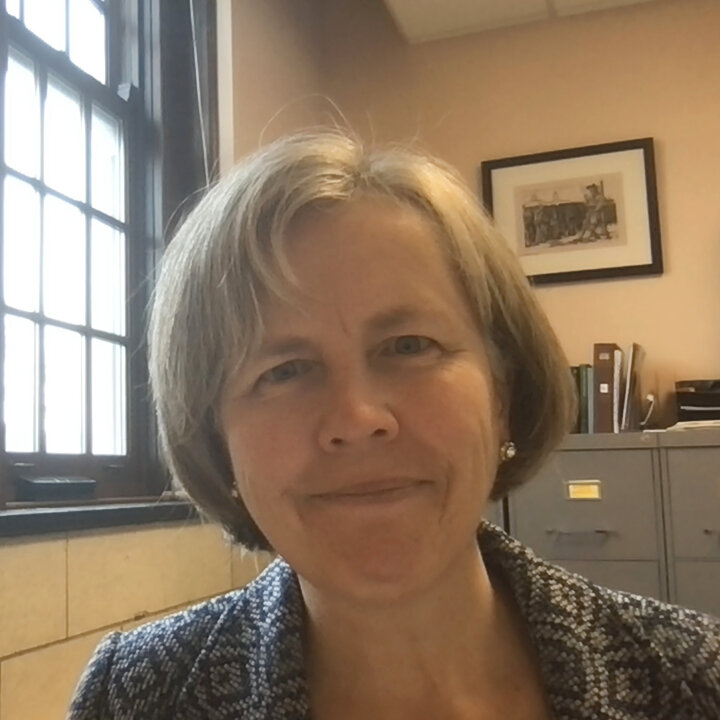
Kristin Lee Hoganson
Reconsidering the Heartland Myth in Light of Local History
The heartland myth casts the small-town and rural Midwest as the all-American core of the nation. Celebrants regard this mythical place nostalgically, believing that it is under siege; critics regard it less favorably, associating it with exclusionary impulses. Love it or hate it, the heartland of myth misleadingly suggests that the nation is, at heart, white, buffered, bounded, and exceptionalist. This talk will show how a local history approach can help us turn misleading mythologies inside out.
Kristin Lee Hoganson is a professor in the Department of Gender & Women's Studies at the University of Illinois Urbana-Champaign. Her book, The Heartland: An American History, drills deep into the center of the country, navigating the disconnect between history and myth and tracking both the backstory of this region and the evolution of the idea that the heartland is an unconnected, isolated region.

Paul Chaat Smith (Comanche)
Out of the Blue and into the Black: Are the Great Plains still Great?
For a long time, the Great Plains were central to American national consciousness. That is no longer true. Or at least, not as true as it once was. Exhausted from decades of unwelcome editing by historians, American Indians, and cultural theorists, the Great Plains narrative is down but perhaps not out. Is a comeback possible? A Great Plains 2.0? What would that look like, and who would be its authors? Paul Chaat Smith sees traps and opportunities for those who would dare to reboot one of America’s most sacred texts. Paul Chaat Smith is a Comanche author, essayist, and curator. He joined the Smithsonian’s National Museum of the American Indian in 2001. His second book, Everything You Know about Indians Is Wrong, was published in 2009. Although Smith spends most of his time crafting game-changing exhibitions and texts, he also enjoys reading obsessively about the early days of the Soviet space program, watching massive amounts of televised sports, and writing about himself in the third person.
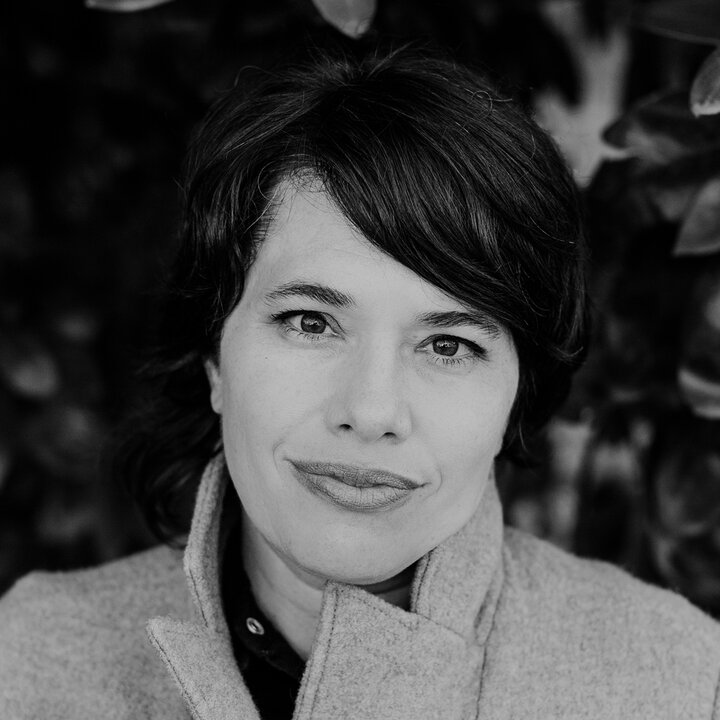
Rebecca Clarren
The Cost of Free Land
Clarren is the author of The Cost of Free Land about how her Jewish ancestors fled persecution in Eastern Europe to take up “free land” in South Dakota through the Homestead Act. Clarren will talk about her book's goal of exposing the myth of free land by looking at displacement of Lakota people.
Rebecca Clarren has been writing about the American West for more than 20 years. She is the winner of the 2021 Whiting Nonfiction Grant for her work on The Cost of Free Land: Jews, Lakota, and an American Inheritance. Her journalism, for which she has won the Hillman Prize, an Alicia Patterson Foundation Fellowship, and ten grants from the Fund for Investigative Journalism, has appeared in such publications as Mother Jones, High Country News, The Nation, and Indian Country Today. Her debut novel, Kickdown (Sky Horse Press, 2018), was shortlisted for the PEN/Bellwether Prize.
Speakers
- Kevin Abourezk, journalist
- Broc Anderson, Buffalo County Historical Society
- Karen Barber, University of Mississippi
- Monique Bassey, University of Nebraska-Lincoln
- Gabe Bruguier (Yankton Sioux Tribe), University of Nebraska-Lincoln
- Reb Bryant, University of Kansas
- Paul Burch, Rice University
- Micah Chang, Montana State University
- Brandon Cobb (Cherokee Nation), The Nature Conservancy
- Cory DeRoin (Otoe-Missouria)
- William DeRoin, architect
- Tom Farris (Otoe-Missouria)
- Paul Fragua (Pueblo of Jemez)
- Christina Faw Faw Goodson (Otoe-Missouria)
- Mystery Harwood, Union College
- Chris Helzer, The Nature Conservancy
- Margaret Jacobs, Center for Great Plains Studies
- Sharon Kennedy, Former Curator of Education Nebraska History Museum at History Nebraska
- Katja Koehler-Cole
- José de Jesús Leal, Native Nation Building Studio
- Cassandra Pfieffer, Mid-Plains Community College
- Cynthia Prescott, University of North Dakota
- Emily Rau, University of Nebraska-Lincoln
- Todd Richardson, University of Nebraska at Omaha
- Robert James Russell, artist/writer
- Ariel Silver, Southern Virginia University
- Ligia Souza, Soil Carbon Solutions Center
- Sara Spurgeon, Texas Tech University
- Will Stoutamire, University of Nebraska at Kearney
- Sunshine Thomas-Bear, (Hocak Nisoc Haci/Winnebago Tribe of Nebraska) Cultural Preservation Director, THPO Office/Angel De Cora Museum
- Connor Thompson, University of Alberta
- Mary Ann Vinton, Creighton University
- Dave Wedin, University of Nebraska-Lincoln
- Laurinda Weisse, University of Nebraska at Kearney
- Antonia Welsch, writer
- Joel Zapata, Oregon State University
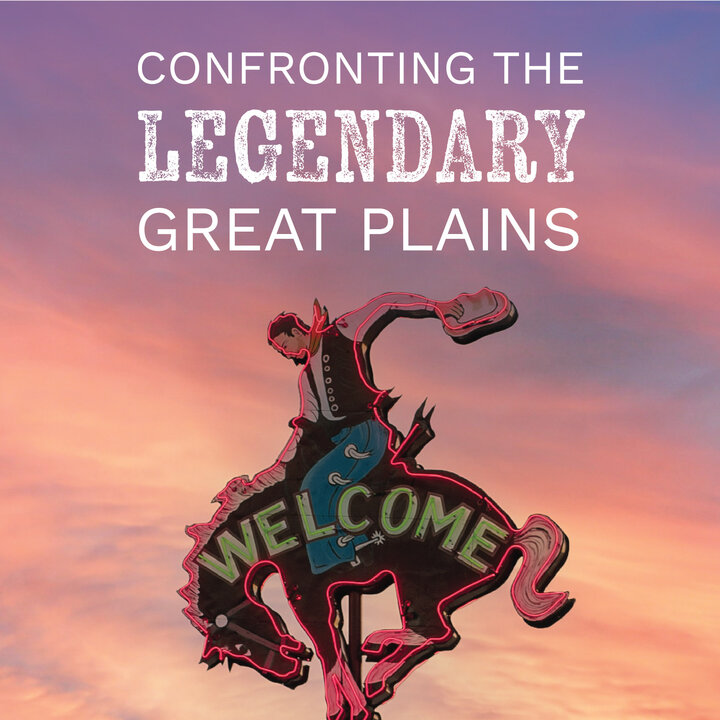
Supported by
- UNL College of Architecture
- UNL Libraries
- Willa Cather Archive
- The Mellon Foundation
Planning committee
- Alison Cloet, Education and Outreach Associate, CGPS
- Margaret Jacobs, Director, Center for Great Plains Studies and Charles Mach Professor of History, University of Nebraska-Lincoln
- Gwendŵr Meredith, Assistant Professor in Center for Resilience in Agricultural Working Landscapes and Department of Agronomy and Horticulture, University of Nebraska-Lincoln
- Katie Nieland, Associate Director, CGPS
- Todd Richardson, James R. Schumacher Chair of Ethics and Professor in the Goodrich Scholarship Program, University of Nebraska at Omaha
- Alana Stone (Sicangu Lakota), Project Manager, Vision Maker Media
- Will Stoutamire, Assistant Professor and Coordinator of Public History, Department of History, University of Nebraska at Kearney
- Sandra Williams, Associate Professor of Art, University of Nebraska-Lincoln
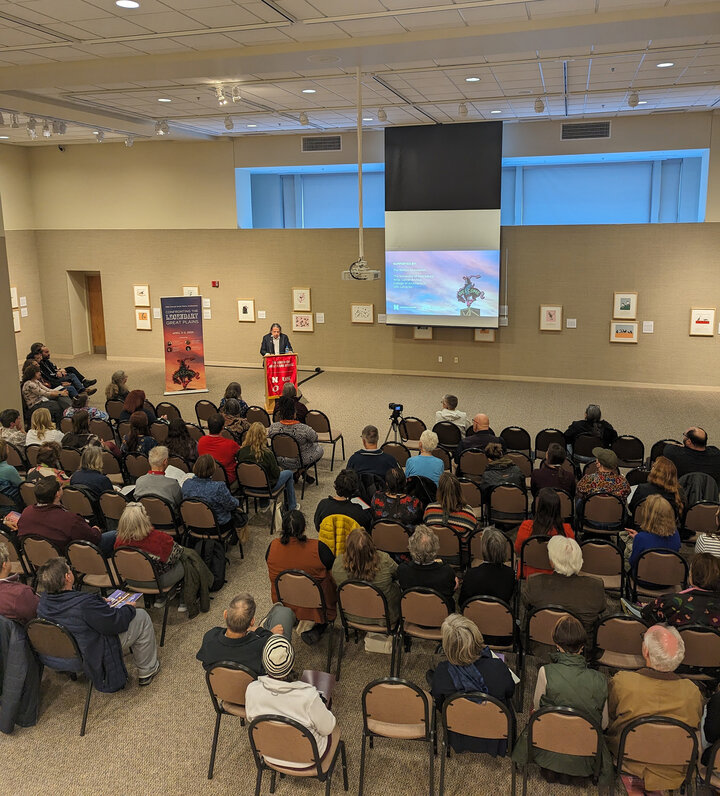
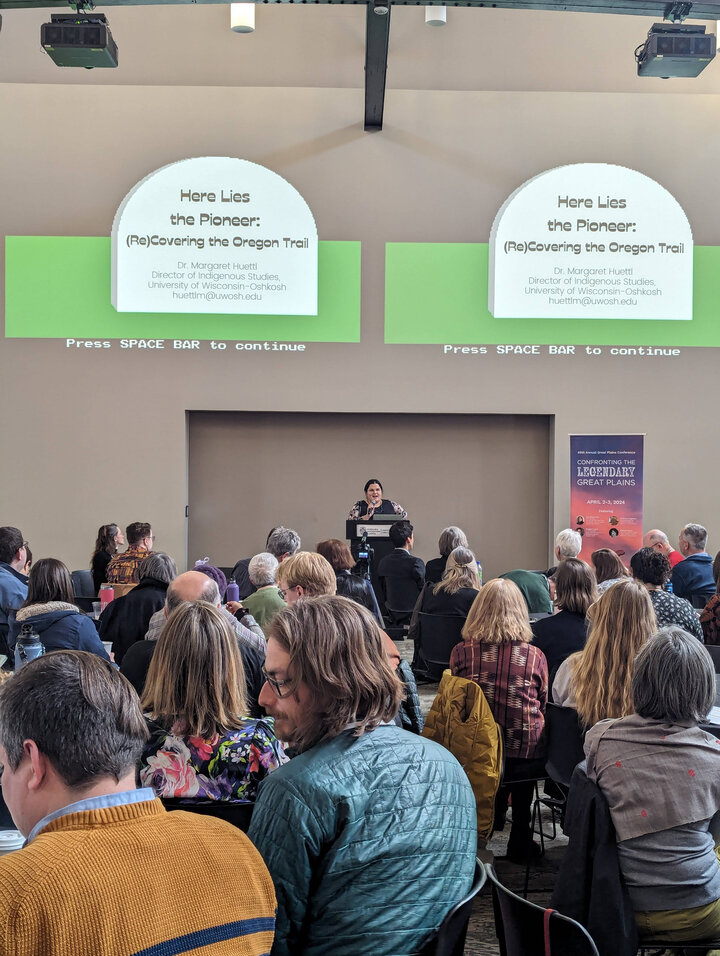
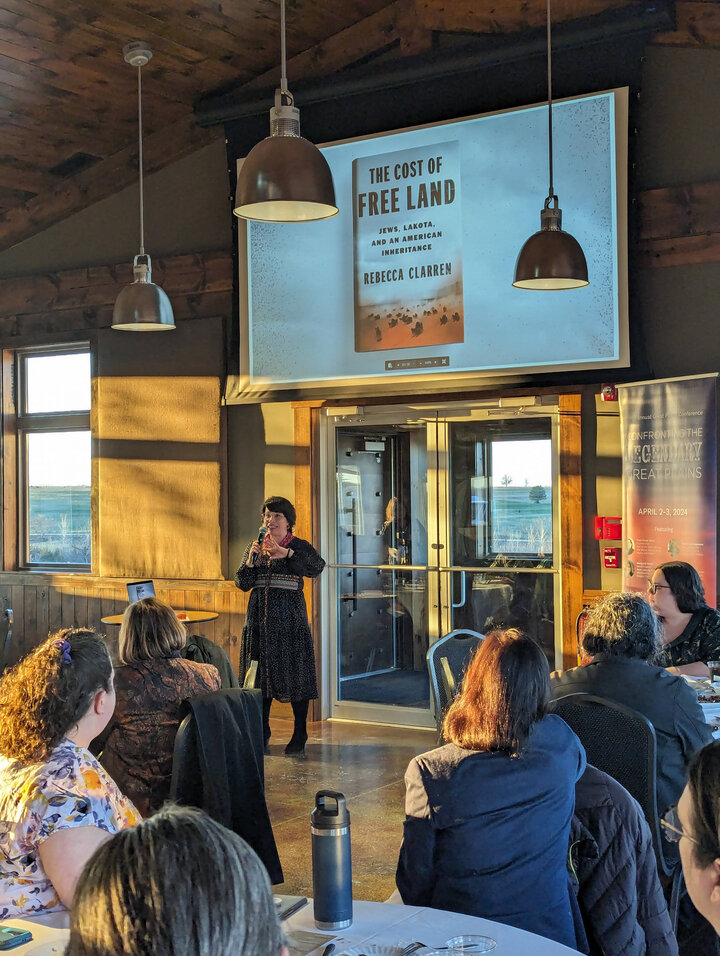
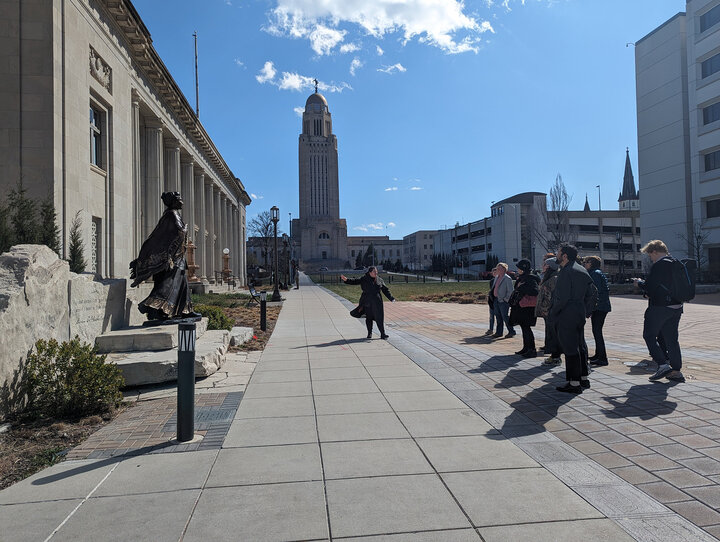
Schedule
April 2
Optional tours/workshops at various locations
Space is limited for tours, sign up via the Eventbrite registration site
2:30 p.m.: Great Plains Art Museum
Indigenous campus tour with Dr. Margaret Huettl
8:30 p.m.: Auld Pavilion, Antelope Park, parking lot on the south side of the building
Lincoln Legends tour with Mystery Harwood. A brief walking tour of Antelope Park, home to several ghostly legends. We will visit the memorial field and the amphitheater, and some local high school students will demonstrate how ghost-hunting and legend-tripping are done in the digital era.
Conference begins at Great Plains Art Museum
4:45 p.m.: Check in opens
5:30 p.m.: Reception
6 p.m.: Keynote Paul Chaat Smith
Out of the Blue and into the Black: Are the Great Plains still Great?
April 3
8:30 a.m.: Check in opens
9-10 a.m.: Keynote, Dr. Kristin Lee Hoganson
Reconsidering the Heartland Myth in Light of Local History, Banquet hall
10:15–11:30 a.m.: Concurrent Session 1
A. Conflicting Landscapes: The Place of Trees in Seas of Grass, breakout B2
The story of humans and the Great Plains is a complex one. Following European settlement, the native prairie has been irrevocably altered through plowing, overgrazing, irrigating, developing municipalities, and planting trees. This panel focuses on the latter and untangles the myth of how planting trees to “diversify” a flat landscape has affected prairies and our relationship with them. Panelists will discuss the interaction of trees and prairie from their respective lenses in prairie conservation and restoration, ranch land management, and human dimensions of ecology. Finally, this panel will offer notes on restoring pockets of native prairie into your own landscaping.
- Brandon Cobb, Indigenous Conservation Specialist, The Nature Conservancy
- Chris Helzer, Director of Science, The Nature Conservancy
- Mary Ann Vinton, Professor & Program Director, Environmental Science, Creighton University
- Dave Wedin, Professor & Director, Center for Grassland Studies, UNL
B. Westerns, Comics, and New Storytelling, breakout C
Western novels and comics were one of the first ways America and the wider world was introduced to the myths of the West. Fantastical tales of cowboys, outlaws, and Native Americans were shipped around the world and paved the way for later Western movies. How did those early portrayals represent the Great Plains and its peoples? How did those representations affect art making today? How are the Great Plains represented in today's comics, Westerns, and other visual works?
- Dr. Sara Spurgeon, Texas Tech University
- Robert James Russell, Writer and Artist
C. Reframing Willa Cather's West, breakout B3
Willa Cather endures as a powerful representative of Nebraska and the Great Plains, and she is rightfully celebrated for her intimate and compassionate portrayal of the lives of women and immigrants in the region. However, her writings in and about the Great Plains do not contain real representation of or engagement with Indigenous peoples in the region. In this panel, we reckon with Cather’s erasures and silences, confronting her work honestly to resituate her writing within the context of Indigenous peoples in the Great Plains, the role of the transcontinental railroad in reshaping the region, and the conversations between Cather’s works and other artistic productions. We address questions such as: How did Cather’s embeddedness in the settler colonial project influence her fictional portrayal of the Great Plains? How much of Cather’s lack of representation of Indigenous peoples in the Great Plains was intentional, and what work can exploring possible motivations behind that choice do for us today? How does putting Cather in conversation with other writers and artists allow for challenging and complex readings of each? We hope this reconsideration of Cather’s work and legacy will help to fill in the silences in her writings and serve as a model for reckoning with complex figures in nuanced and productive ways.
- Emily J. Rau, University of Nebraska-Lincoln
- Ariel Silver, Southern Virginia University
- Paul Burch, Rice University
D. Advancing Inclusive Storytelling in the Great Plains: Nebraska’s Historical Marker Equity Program, breakout D
This panel will explore the past, present and future of the historical marker through a conversation with History Nebraska’s Equity Marker Program, a new effort examining the language and themes of the well-known landscape form, updating narratives to incorporate more voices, and creating improved access for underrepresented communities to commemorate their own histories. The discussion begins with an exploration of the program’s history, followed by an analysis of geographical distribution and thematic areas – providing insights into how Nebraska’s history has been traditionally represented and why updating these narratives matters. The panel will also share inspiring stories of community involvement in the creation of new markers and provide insight into the future directions of the program.
- Autumn Langemeier, Historic Marker Programs at History Nebraska
- Eric Ewing, Executive Director, Great Plains Black History Museum
- Araceli Hernandez, History Nebraska
- Vickie Schaelper, Legacy of the Plains Museum
- Nolan Johnson, History Nebraska
- Nathan Tye, University of Nebraska at Kearney
11:45 a.m.–1:30 p.m.: Lunch and Keynote Dr. Margaret Huettl
Here Lies the Pioneer: (Re)Covering the Oregon Trail, Banquet hall, Lunch provided
1:45–3 p.m.: Concurrent Session 2
A. Exploding Plastic Indigenous, breakout C
As an artistic movement, Native Pop Art routinely challenges and updates myth, and while the approach is present across North America, the movement has been especially active on the Plains. This panel discusses the work of a variety of Native artists currently working in a Pop style on the Plains, considering how they disrupt legendary depictions of Indigenous people.
- Wendy Red Star: Archival Interventions, Karen Barber, University of Mississippi
- Paint Buffalo and You’ll Have a Career, Tom Farris (Otoe-Missouria), First Americans Museum
- Mary Sully’s Proto-Pop Art, Todd Richardson, UNO
B. Legendary Plains Folklore (and Folklorists), breakout B3
The Great Plains doesn’t have more folklore than anywhere else—folklore is everywhere all the time—yet Plains folklore is better documented and understood than folklore from other places because so many amazing folklorists have called the region home. In that spirit, this panel will consider “legendary” folklore of the Plains, from the contributions of legendary folklorists like Roger Welsch to the ongoing practice of “legend-tripping” in Lincoln, Nebraska.
- The 'Compulsive Teachers' of Folklore: A Case for the Power of Folklore Studies in General Education Curricula, Cassandra Pfeifer, Mid-Plains Community College
- Homeland Hauntings: Thirty Years of Legend-Tripping in Lincoln, Nebraska, Mystery Harwood, Union College
- The Stories We Keep: Reflections of the Late Roger Welsch, Antonia Welsch, writer
C. Reshaping Earth's Skin: The Effect of Settler Mythologies on the Soils of the Great Plains, breakout B2
How deep do we find the myths of the great plains beneath the Earth’s surface, and what are the consequences of these myths for the soils? Soils of the Great Plains are worlds unto themselves, and even a tablespoon of soil holds a billion microscopic creatures. These creatures form the backbone of dynamic soil processes that have supported the perennial endeavors of our grassland ecosystems over centuries. This world beneath the surface has been the unseen recipient of human attention. Where Indigenous peoples had stewarded the region and their soils for thousands of years, settlers saw untamed lands, a Great American Desert, unfit for cultivation. However, the invention of the steel plow allowed settlers to cut through the dense roots and rich soils of the prairies. With this invention, they not only cultivated crops, but a new myth: rain follows the plow. While the plow ushered in a new era of North American cultivation, it failed in increasing rainfall, but rather contributed to one of the most infamous agroecological disasters: the Dust Bowl. Despite the lessons of the Dust Bowl, we continue to perpetuate agricultural myths that degrade the fundamental soil properties. In today’s landscape, these myths persist in erosion control, fertilization, and irrigation practices, which patch damage temporarily but ultimately push forward a feedback loop of soil depletion. In this session we will explore how agricultural myths can be observed in soil ecosystem processes up to two meters deep within the Earth’s subsurface, learn how agricultural legacies shape grassland restoration practices and outcomes, and importantly, how new approaches to agroecosystems are transforming soils by interfacing with soil ecosystem processes. Together we will then ask, as we work to rebuild our relationship with soils, what new mythologies will we see reflected in Earth’s skin.
- Reb Bryant, PhD student at the University of Kansas studying plant-arbuscular mycorrhizal fungi relationships for tallgrass prairie restorations
- Katja Koehler-Cole, Soil health management extension educator
- Ligia Souza, Soil Carbon Solutions Center
D. Native Nation Building through Tribal Engagement and Intergenerational Knowledge, breakout D
This panel assembles a group of indigenous landscape architects, planners, and architects to discuss design within Native Nations spanning historical perspectives, present-day initiatives, and future prospects. At its core, the panel champions the central design ethos encapsulated in the principle of "For Native communities by Native communities," firmly asserting the belief in the innate knowledge and vision harbored by Native communities to chart their own destinies. The panel will feature a diverse range of voices, starting with representatives from MIG Native Nation Building Studio, a professional firm specializing in tribal community engagement design projects. The speakers will illuminate past challenges and present directions in their efforts to empower indigenous communities through design nationwide. Following this presentation, an architect practicing in Nebraska will offer a unique perspective on localized design challenges and solutions. Lastly, a group of educators will share insights into the pivotal role of involving students in the Tribal community engagement process, emphasizing the importance of intergenerational knowledge transfer and the cultivation of future leaders in the field. This multifaceted discussion sheds light on the intricate interplay between design, indigenous empowerment, and education, envisioning a more inclusive and culturally vibrant future for Native Nations.
- José de Jesús Leal, ASLA, APA, Principal and Native Nation Building Studio Director, MIG, Inc.
- Paul Fragua (Pueblo of Jemez), Elder Architect and Planner, MIG, Inc.
- William DeRoin, architect
- Monique Bassey, Visiting Assistant Professor University of Nebraska-Lincoln
3:15–4:30 p.m.: Concurrent Session 3
A. The Persistence of the Pioneer in Museums and Historic Sites, breakout C
This panel will examine why pioneer narratives persist in museums and historic sites, both in the interpretation of westward expansion, as well as in the insistence on celebrating “firsting” within our communities. Panelists will talk about the consequences are of those narratives, and what we can do about them.
- Cynthia Prescott, University of North Dakota
- Connor Thompson, University of Alberta (Doctoral Student)
- Broc Anderson, Buffalo County Historical Society/Trails & Rails Museum
- Will Stoutamire, moderator
B. Representation of Great Plains Peoples, breakout B3
This panel will present a counter-narrative to the default settler colonialism associated with the region and include representation of other populations in the Great Plains through the lenses of art and history.
- Sharon Kennedy, Former Curator of Education Nebraska History Museum at History Nebraska
- Micah Chang, Assistant Professor, Montana State University
- Joel Zapata, Oregon State "Depicting the Real Heartland/Corazónlandia: The Great Plains’ Long Mexican Past and Present Through Art"
C. Collecting Truth and Myth, breakout B2
How do we choose what to keep? What can archives and special collections tell us about the legends and myths of the Great Plains? How do we use what has been saved to tell more full stories of this place? Join experts in research, collections, and archives to hear about how three different institutions are using archives to tell new stories of the Plains.
- Dr. Gabriel Bruguier (Yankton Sioux Tribe), Assistant Professor, Research Specialist Librarian
- Sunshine Thomas-Bear, Cultural Preservation DirectorTHPO Office/Angel De Cora Museum
- Laurinda Weisse, University Archivist and Digital Repository Manager at University of Nebraska at Kearney
D. Re-Indigenizing Southeast Nebraska, breakout D
Learn more about a new joint project of the Center for Great Plains Studies and the Otoe-Missouria Tribe of Oklahoma that aims to promote healing and reconciliation in southeast Nebraska by reconnecting the Otoe-Missouria to their homelands and educating non-Native people about the history and ongoing presence of the Tribe and other Indigenous peoples in our region.
- Christina Faw Faw Goodson (Jiwere-Nut’achi/Baxoje) co-directors the Footsteps Project and is an educator, historian, and linguist who has served as the Indian Education Director for Frontier Public Schools in Red Rock, Okla., as Language Coordinator and Instructor for the Otoe-Missouria Tribe, and as the Native Language Specialist for the National Indian Education Association.
- Margaret Jacobs (settler background) co-directors the Footsteps Project and is the Director of the Center for Great Plains Studies, Charles Mach Professor of History at UNL, and co-director of the Reconciliation Rising Project.
- Kevin Abourezk (Sicangu Lakota) leads the “Creating Land-Based Commemorations” work for the Footsteps Project and is the Journalist and Deputy Managing Editor for the Indian Country Today Media Network, and Co-Director, Reconciliation Rising multimedia project.
6:30–9 p.m.: Glacial Till Vineyard & Winery
Great Plains-themed dinner at Glacial Till Vineyard & Winery (additional ticket required, see Eventbrite).
Reading from The Cost of Free Land: Jews, Lakota, and an American Inheritance by Rebecca Clarren, who has been writing about the American West for more than 20 years. Her journalism, which has won the Hillman Prize, an Alicia Patterson fellowship and ten grants from the Fund for Investigative Journalism, has appeared in such publications as TIME, Politico, The Nation and Indian Country Today. Her latest book The Cost of Free Land won a 2021 Whiting Creative Nonfiction Grant; Kirkus Reviews named it one of the best nonfiction books of 2023.
April 20
East Campus Union
8:30 a.m.: Check in desk opens
9-10 a.m.: Keynote Rose Godinez
Through the Eyes of a Meatpacker's Daughter, Great Plains Room B-C
10:15-11:30 a.m.: Concurrent Session 1
A. Re-Envisioning the Land Grant University Mission, Great Plains Room A
Land-grant universities (LGUs) have been providing affordable access to a quality higher education experience for over 150 years. However, these same institutions were founded from the sale of lands taken from Tribal Nations, typically through broken treaties or brute force. We will discuss initiatives being undertaken by LGUs as they grapple with these contrasting circumstances, with special attention paid to the Stepping Out and Stepping Up Native American Racial Justice Project at The Ohio State University.
Dr. Stephen Gavazzi, The Ohio State University (virtual): Remaining Land-Grant Fierce While Accepting the Land-Grant Truth of Our Foundation
B. Field and Stream: Wild Food and Foraging in the Great Plains, Prairie Room
Presentations on wild foraging, cooking wild game, hunting for food, and fishing for food.
Amy Bousman, Education Officer, Kansas Department of Wildlife and Parks; Jenny Nguyen-Wheatley, Associate Editor, Nebraskaland Magazine, Nebraska Game and Parks Commission; Greg Wagner, Communications and Marketing Specialist and Manager, Nebraska Game and Parks Commission; Daryl Bauer, Fisheries Outreach Program Manager, Nebraskaland Magazine, Nebraska Game and Parks Commission
C. Rooting into Nebraska Farm to School Growth, Arbor Room
This panel explores Nebraska’s Farm to School efforts to connect communities in bringing local and nutritious food to schools while cultivating innovation in environmental education. Hear from panelists at the local and state level as they discuss their experiences coordinating statewide Farm to School, producing local and sustainable foods for Nebraska’s schools, and developing a shipping container farm for students to grow hydroponic greenery.
Sarah Smith, Farm to School Specialist, Nebraska Department of Education; Gary Fehr, Co-founder, Green School Farms; Dakota Staggs, Assistant VP, Beyond School Bells
11:45 a.m.-1:30 p.m.: Keynote J. Arbuckle
The Sociology of Soil and Water Conservation in Agriculture: What have we learned, and where are we headed?, Great Plains Room B-C, Lunch provided
1:45-3 p.m.: Concurrent Session 2
A. Changing How We Farm and Ranch: Lessons from Social Science Research, Great Plains Room A
In this panel we will hear from researchers with insights from social science research, and what has been learned that might motivate change.
Fernanda Krupek, Doctorate Student, Agronomy, UNL: Sustaining Soil Health Management on Nebraska Farms: The Role of Climate as a Motivating Factor for Behavior
Dr. Heather Akin, Assistant Professor, Agricultural Leadership, Education, & Communication, UNL: Public Perceptions of Water and Climate: Insights from the Nebraska Rural Poll and Implications for Farming
Dr. Tonya Haigh, Research Assistant Professor, Social Science Coordinator, National Drought Mitigation Center, UNL: Farmer and Rancher Use of Climate Information in Decision-Making and Adaptation
B. Zooming in on Local Food in Nebraska, Arbor Room
This panel explores the local food movement in Nebraska. From nonprofit organizations and farmers markets to education and policy, the food landscape in Nebraska is part of a wider movement focused on expanding access and knowledge about local food across the country.
Georgia Jones, Extension Food Specialist; Megan McGuffey, Executive Director, Community Crops; Renee and Jerry Cornett, Formerly of Prairie Plate Restaurant, Lake House Farm
C. Native Nations Rebuilding and Indigenous Peoples Food Sovereignty, Prairie Room
Learn about the displaced Maya Nation in Nebraska and how the current food system affects the Indigenous Peoples.
Luis Marcos, Q'anjob'al Maya Ambassador to the Omaha Nation and Founding Board Member, Maya Economic Development Corporation; Harieth Francisco, Maya Q'anjob'al Youth Member; Eulalia Pedro, Comunidad Maya Pixan Ixim Board Member, Q’anjob’al Maya Master Gardener -Maya Regeneration Project; Moderator: Laura Thomas, Communications and Partnerships Manager, GC Resolve
3:15-4:30 p.m.: Concurrent Session 3
A. Agriculture, Food, Land and Water in Iowa and Nebraska, Arbor Room
This panel will discuss how law has shaped land and water use for agriculture on the Great Plains, drawing largely on the experience of Nebraska and Iowa.
Jess Shoemaker, Professor, Law, UNL; Anthony Shutz, Associate Professor, Law, UNL; Neil Hamilton, Emeritus Professor, Law, Drake University
B. The Meatpacking Industry and the Juxtaposition Between Essential Work, Individual Health, and Community Well-Being, Prairie Room
This panel provides an overview of the meatpacking industry and long-standing safety and health concerns. Panelists will also discuss the impact of COVID-19 on the industry, workers, and communities; describe public health ethical principles framing understanding and interactions with essential workers; and highlight new research with meatpacking workers, facilities, and communities throughout the pandemic.
Dr. Athena Ramos, Associate Professor, Department of Health Promotion, Center for Reducing Health Disparities, UNMC; Darcy Tromanhauser, Director of the Immigrants & Communities Program, Nebraska Appleseed; Dr. Abigail E. Lowe, Assistant Professor, College of Allied Health Professions, UNMC; Priscila Soto Prado, Community Research Assistant, Center for Reducing Health Disparities, UNMC
C. When a Tomato is More Than a Tomato: Indigenous Food Sovereignty and School on the Great Plains, Great Plains Room A
This presentation explores school-centered efforts to decolonize food practices in a school located on an American Indian reservation in Nebraska with examples that include a reintroduction of buffalo meat into the school lunch menu; the development of a culinary arts program that teaches traditional foods, recipes, and preparation; a school garden; and the pursuit of external grant funding and collaborations to support food security aims that are culturally sustaining.
Dr. Aprille Phillips, Associate Professor, Educational Administration, UNK; Kristine Flyinghawk (Isanti Tribe descendent), Native Communities Manager, CFRA; Delberta Frazier (Santee Sioux), Outdoor Classroom Educator, Umoⁿhoⁿ Nation Public School
5:30 p.m.: Glacial Till Vineyard and Winery
Eat Indigenous with Chef Anthony Warrior, separate tickets required
